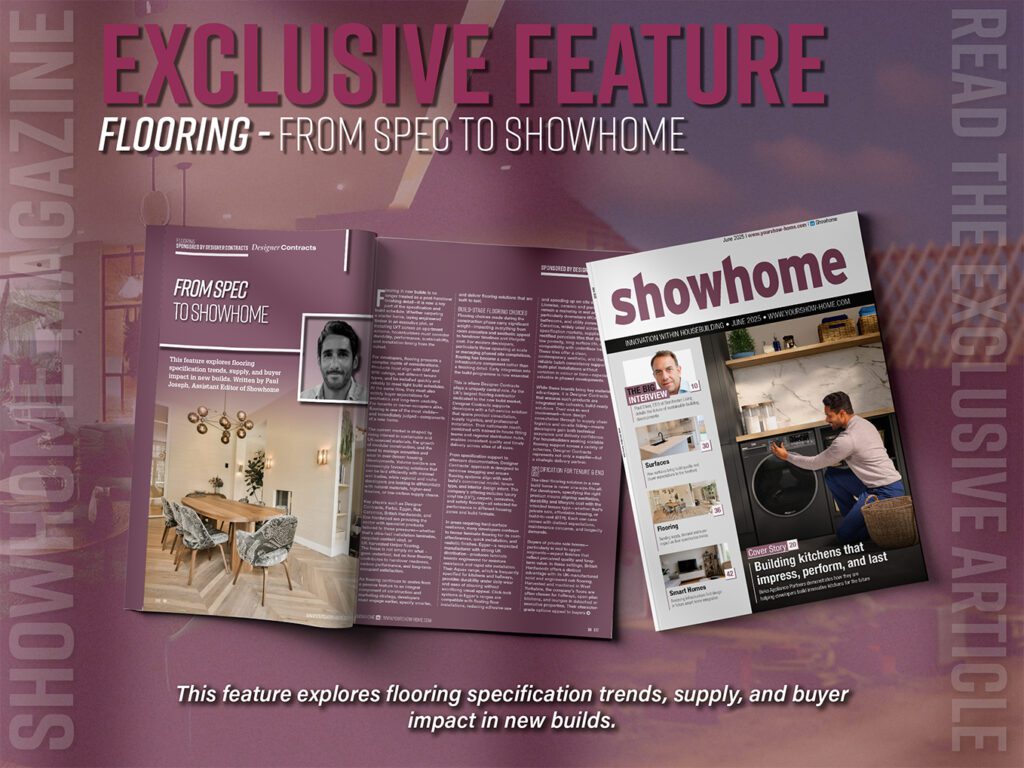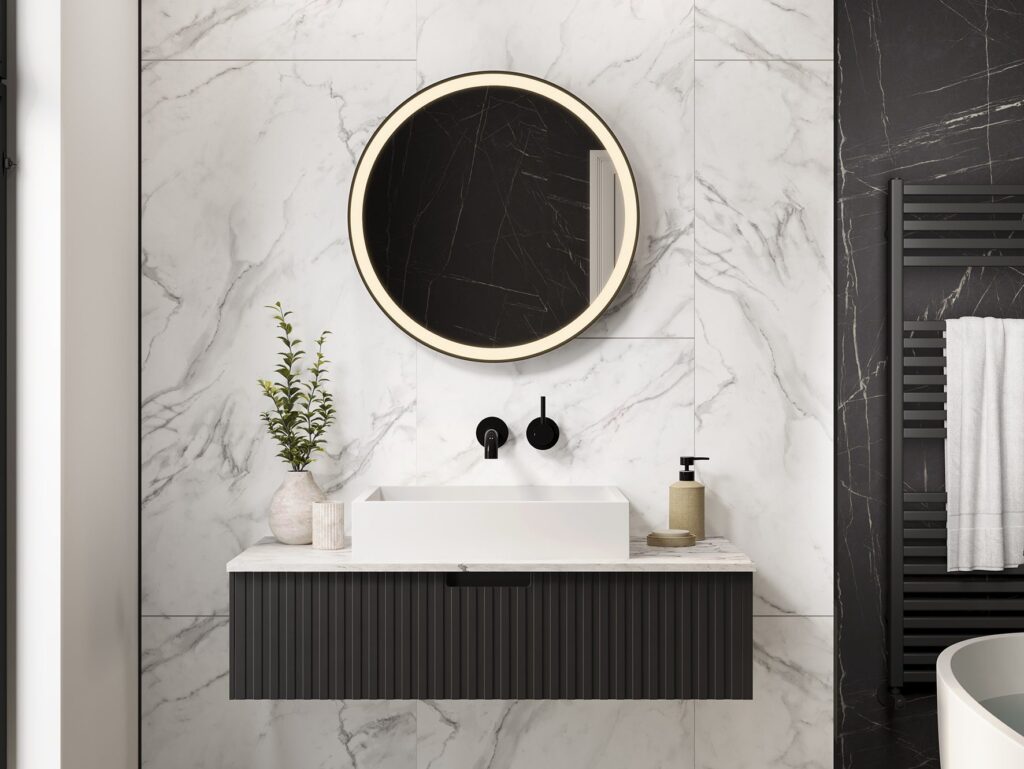Geberit’s Product and Marketing Director for the UK, Pete Davis, discusses the role of innovation in the design, planning and installation of bathrooms
Tell us a little bit about your job and experience in the market…
I am the Product and Marketing Director at Geberit UK and I also serve as a board member for the Bathroom Manufacturer’s Association. I have been working for over 17 years with high-quality brands, driving customer-centric and value-added product development and delivering strategic marketing communications.
Who are Geberit and what do they do?
From one-man plumbing company to a global sanitary manufacturer. Geberit’s values and objectives have remained largely unchanged over the past 150 years: A down-to-earth attitude, quality awareness and the pursuit of excellence still characterize the corporate culture today. The modest family business of past times has now become the European market leader for sanitary products, providing unique added value when it comes to piping, sanitary installation solutions and bathroom ceramics.
The history of Geberit began in 1874 as a one-man business in the historic centre of the Swiss town of Rapperswil. 30 years later, company founder Albert Gebert developed a lead-lined wooden cistern. The success story continued with the invention of the first plastic cistern in 1952 and the concealed cistern in 1964. Today, the company, headquartered in Rapperswil-Jona, employs more than 10,000 people worldwide and operates 26 production facilities.
What role does innovation play in the design, planning and installation of bathrooms?
Property developers should not only be specifying bathroom solutions that appeal to the homebuyer – they should also consider the ease of installation on site for their contractors and installers.
Product development is based on in-depth market knowledge and cutting-edge technology. At Geberit, we research and develop in a targeted, practice-oriented and results-oriented manner. In this way, we are consolidating our market leadership and setting trends in the industry with our sanitary products.
Quality, reliability and innovation have a long tradition at Geberit. These features still form the core of our brand today. Know-How Installed gets to the point: for example, our Easy Fast Fix 3 (EFF3) installation technology features across the majority of our WCs – with the new fastening system, the installation of wall-hung ceramics is even easier than before, saving time and reducing the risk of a poor installation.
What is the future of technology in the bathroom?
The rise of technology in the home over the last few years has been nothing short of extraordinary. Today’s homebuyers have lived through some of the biggest changes since the Industrial Revolution, embracing the consolidation of electrical appliances and gadgets into fewer, smaller, connected devices. Devices that were viewed as aspirational just a few years ago are now commonplace in the home – from app-enabled heating controls and smart doorbells, to voice-activated light bulbs and Bluetooth-enabled white goods. And all with the option of centralised controls via a personal assistant or smart phone.
Clearly some areas of the home have advanced more rapidly than others when it comes to automation and smart integration.
If there is one room, however, that remains largely untapped when exploring the potential of smart appliances, it is the bathroom. Despite the increasingly important role that the bathroom plays in modern lives, technology in the bathroom has evolved at a slower pace. Different options within the specification are not typically offered in the same way that they are for kitchens. It is time for developers and homeowners to widen that scope.
Bathrooms are critical to selling a home, with anecdotal evidence from Geberit industry events repeatedly showing that bathrooms are key to selling homes more quickly and for more money. One study shows 80% of people would pay more for a home with a modern bathroom1.
How do these technological solutions increase functionality?
Even in 2024, we are still living the aftereffects of Covid-19. One of the biggest impacts this has had on the way homeowners interact and consider their wash space is cleanliness.
Hygiene is at the top of everyone’s agendas and having a modern bathroom design that is easy to clean and maintain creates buyer appeal. Consider wall-hung WCs and furniture that floats above the floor for easier cleaning or special glaze finishes such as Geberit KeraTect – an extremely smooth and hygienic solution that ensures long-term protection of the ceramic appliances.
Moreover, research suggests that one third of UK households are multi-generational – so it’s never been more important for housebuilders to specify solutions that can meet this growing demand. Much of this begins by considering products that make everyday use easier and more convenient. Geberit’s AquaClean shower toilet, which paves the way for washing with water, is one such example. It incorporates a gentle oscillating spray which provides a ‘fresh-out-of-the-shower’ feeling and, importantly for a multi-generational household, users can set their preferences on everything from water temperature and pressure to the position of the spray arm.
What are some of your predicted bathroom trends for 2024?
Self-care, wellness and functionality are top priorities for homeowners and bathroom design trends are following suit.
Minimalism is expected to continue being popular in 2024 with uncluttered spaces, clean lines and simple designs. Imagine bathrooms with floating shelves, vanities attached to walls to free up space, and secret storage spots to keep everything neat and clean.
But it’s not just about being practical. Bathrooms are getting smarter too. Mirrors that do more than just show your reflection, taps that turn on when they sense your hand and showers that give you a spa-like experience – all these are going to be part of more bathrooms in 2024.
Think Geberit’s Piave and Brenta wall-mounted, touchless taps, which perfectly fit into the minimalistic, functional trend with a timeless, elegant design. Our Option mirrors provide lighting and clever storage with height-adjustable glass shelves and our touchless WC flush controls provides a hygienic automated flush solution. These products can be styled in any kind of bathroom to create a stylish, functional space.
How can housebuilder and property developers create homes that are water efficient?
According to the Energy Saving Trust, bathroom showers, toilets, baths and washbasins consume more than two-thirds (68%) of household water. And with water bills set to increase by 50% over the next 5 years (The Times Money Mentor, 2023) – the bathroom is the ideal place to start when trying to reduce water usage and save money.
At Geberit, sustainability starts with product design, and we have a long tradition of manufacturing products that save water, especially WC cisterns. According to a model calculation, since 1952 water consumption for toilet flushing has decreased by around 80% from 70 litres to 14 litres per person per day thanks to several innovations such as Geberit dual-flush and stop-and-go cisterns.
Launched last year, the innovative Acanto Turboflush WC 2.0 uses advanced Turboflush technology that has precisely controlled steering of the waterflow to significantly improve flushing performance, using just 4.5litres of water. This cutting-edge design has water guidance edges to achieve powerful, full service and precise flushing performance with minimal water usage.
It’s estimated that an average household uses more than 33 litres of water from flushing every day, so introducing dual flush technology is the most effective way to reduce water consumption. Manufacturers are increasingly producing dual flush plates and at Geberit we offer a wide range of styles and designs to meet every price point.
However, water-saving cisterns are only the first step. Maintenance and upkeep are essential. The integrity of washers in valves and flat rubber seals can degrade over years of usage so remind your homeowners to check their WCs for running water in the bowl when the toilet has not been flushed – these are low cost and readily available spare parts and can easily be rectified by the end user with the right knowledge.
Read more news and exclusive features in our latest issue here.
Never miss a story… Follow us on:
Showhome
@Your_Show_Home
@Showhomemag
Media Contact
Joseph Clarke
Editor, Showhome
Tel: +44 (0) 1622 823 920
Email: [email protected]











